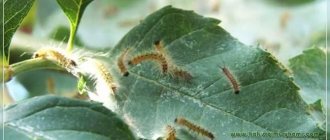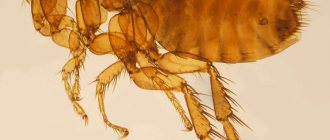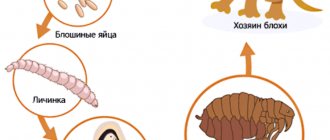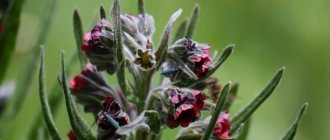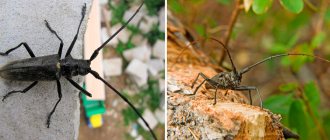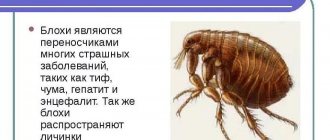There are 15,000 species in the moth family. It got its name because of some features of the caterpillar's method of movement. Insects have a dull color, the color of the wings is generally closer to the colors of the place of residence. The tight pressing of the wings and body to the bark of the trees allows the moths to blend into the general background. It causes significant damage to forests and gardens, so it is necessary to start fighting them without delay.
Type of adaptation, form of natural selection, direction of evolution of the birch moth and transformation:
Habitats
The birch moth is a very numerous species. Its representatives can be found almost throughout Europe. The only exception is the Far North, since the climate prevailing there is completely unsuitable for her way of life. The same rule applies to Russian lands.
It should be understood that trees are extremely important for the survival of this insect. Therefore, it tries to settle in those areas where there is excellent access to them. The ideal environment is fruit plantations or forests. However, if there are none, then the birch moth can easily make do with a city park or public garden.
Appearance of an insect
The moth is a small butterfly with a rather thick body. The wingspan of adults is 4-5 cm. It is curious that initially all butterflies of this species were light gray in color with many dark pigments. However, in recent years their color has undergone dramatic changes. Thus, the birch moth became much darker, and the once clear spots began to completely merge with the body.
The reason for this was evolution: because of life in the city, butterflies were forced to adapt to the colors of the surrounding world, because otherwise they would have become easy prey for birds. Those insects that live in the forest still remain true to their old war paint.
By the way, such metamorphoses are very useful for ecologists’ research. By observing the colors of butterflies, they can determine how polluted their region is. With this in mind, it's nice to know that even the worst pest has its positive sides.
Industrial melanism
Birch moth ( Biston betularia carbonaria
), melanistic form.
Birch moth (
Biston betularia
), normal color.
It is the most famous example of industrial melanism. Until the middle of the 19th century, all specimens of the birch moth collected by entomologists had white-grayish wings with dark spots ( morpha typica
), which provided a protective coloring on tree trunks.
Now many populations are polymorphic, they contain black melanistic forms - Biston betularia morpha carbonaria
.
The increase in the frequency of melanistic forms is a consequence of directed selection, the main driving factor of which is the selective consumption of butterfly individuals by birds. In forests around industrial conglomerates and cities, tree trunks are often devoid of lichen and may be blackened by soot. In such areas the protective color is black, while in unpolluted areas the protective color is light spotted. A third form is also known, having a dark color intermediate between the melanistic and light forms of the birch moth - morpha insularia
. This type of coloration, like the melanistic one, dominates over the light one, however, apparently, it is determined not in one, but in several loci. Based on laboratory experiments, it was assumed that the alleles that control melanistic coloration have a pleiotropic effect, determining not only the color of the butterfly, but also its behavior (choice of background). However, this has not been confirmed by observations in nature.
Butterfly breeding season
With the arrival of May, the mating season begins for birch moths. Intoxicated by pheromones, they flock to each other and begin to circle in a ritual dance. And if the partner is suitable for the female, then soon they begin the act of intercourse. It lasts only a fraction of a second, but this is enough to pollinate the thousands of eggs that the “lady” carries.
After this, the birch moth looks for a safe place for future offspring. Often this is a crack in the bark of a tree or a small hole in its trunk. On average, one female can lay from 700 to 2000 eggs. And just imagine how much food this colony needs at the moment of its awakening!
In addition, the caterpillars develop throughout the summer. That is, they have three whole months to destroy local gardens. And only with the arrival of autumn they burrow into the ground, where they turn into pupae. And in the spring, the whole process of metamorphosis is repeated again in a circle that has been rolled over centuries.
Means of struggle
Chemical and biological drugs
Kinmiks
The insecticide does not accumulate in the soil, the result of use is noticeable in a short time. Plants are treated with a solution prepared from 2.5 ml of the drug and 10 liters of water. Spraying is carried out 2 times with a break of 3-4 weeks. Protective effect: 14–20 days.
Mitak
Systemic insectoacaricide of contact action. It is used to spray fruit crops against pests during the budding period. The concentration of the drug is 20–40 ml per 10 liters of water. Plants are sprayed no more than 2 times per season. The protective effect lasts for 30 days.
Sumi-Alpha
A highly active drug from the pyrethroid group. Plants are sprayed against moths once after flowering. The solution is prepared in a concentration of 5 g of the drug per 10 liters of water.
Lepidocide
A biological product that can be used at any phase of plant development. It does not accumulate in fruits or soil. Consumption of the drug is 20–30 g per 10 liters of water. The frequency of treatments against moths is 2 times with a break of 7–8 days.
Bitoxibacillin
The biological preparation is produced in the form of a light brown powder or in tablets. For moths, plants are sprayed 1-2 times with an interval of 7-8 days. For 10 liters of water you will need 40–80 g of powder or 8–16 tablets per 1 liter of water.
People's Councils
- 1 kg of chopped tomato tops is poured into 10 liters of water, left for 5–6 hours, and then the mixture is boiled for 30 minutes over low heat. The cooled solution is filtered. For spraying, the infusion is diluted with water in a ratio of 1:3.
- 100 g of tobacco is poured into 3 liters of boiling water and left for 2 days. Then the infusion is filtered and water is added to it to a volume of 10 liters. Before spraying, add 40 g of soap.
- Repellent plants are planted next to trees and shrubs: lemon balm, valerian, tansy .
- Mechanical methods of control include the installation of trapping belts on tree trunks so that females cannot lay eggs in the bark, and manual collection of caterpillars. Early spring and late autumn digging of the soil around the trees will destroy the pupated caterpillars.
Timely measures will protect the garden from pest invasion, preserve the future harvest and the health of the plants.
You will learn more about moths and their caterpillars from the video.
Tree Defiler
The caterpillar of the birch moth butterfly is one of the most dangerous pests living on the territory of the Russian Federation. Having hatched from the egg, they begin to eat everything that comes along the way, be it leaves, buds, buds, flowers or fruits. And given their number, it is not difficult to guess that literally in one day they can destroy a good part of the greenery on a tree.
Therefore, gardeners try to treat their trees in advance so that they are not attacked by omnivorous caterpillars. In addition, in this difficult struggle, some species of birds come to the aid of people. After all, if adult butterflies are protected by camouflage color, then their offspring are easier and more nutritious prey.
How to fight
It is recommended to fight against females with underdeveloped wings using adhesive trapping paper belts, on the surface of which non-drying garden glue should be applied.
This will help prevent female insects from crawling into tree crowns to lay eggs. They should be applied to the upper and lower parts of the trunk; insects and their eggs accumulated on the belts must be destroyed.
In late autumn it is necessary to dig up the soil
in the tree-trunk area, digging up the soil should also be carried out from June to July, when caterpillars pupate, which will prevent the birth of insects.
Biological methods of protection also show high effectiveness in the fight against moths, one of them is the creation of acceptable conditions for the life of the pest’s enemies - takhin flies
, equestrians, to attract them, it is recommended to plant umbrella plants (
dill
,
celery
,
carrots
) on the site.
Treating plants before or at the beginning of flowering with insecticides ( gomelin)
,
lipocide
,
dendrobacillin
).
Other control methods:
- mechanical collection and destruction of caterpillars and their nests;
- regular stripping of bark from lichens and mosses, whitewashing of trunks;
- deep loosening of the soil in the tree trunk space and between the rows;
- Spraying with biological products and pesticides is carried out during the period of mass crawling of caterpillars.
The birch moth is considered one of the most common pests; the insect attacks trees, eats leaves, and a large number of insects can completely destroy the crown of a tree. As control measures, it is recommended to use agrotechnical, biological methods, as well as mechanical methods. The choice of control method depends on the time of year, the degree of damage to trees by the pest, the characteristics of the site, etc.
There are 15,000 species in the moth family. It got its name because of some features of the caterpillar's method of movement. Insects have a dull color, the color of the wings is generally closer to the colors of the place of residence. The tight pressing of the wings and body to the bark of the trees allows the moths to blend into the general background. It causes significant damage to forests and gardens, so it is necessary to start fighting them without delay.
Type of adaptation, form of natural selection, direction of evolution of the birch moth and transformation:
Pest control methods
Gardeners are well aware of who the birch moth is. The photo of this pest is familiar to most of them. After all, as they say, you need to know the enemy by sight. As for the fight against caterpillars itself, it is best to use special chemicals for pollinating fruit trees (Lipocid, Gomelin).
Experienced gardeners are accustomed to hanging adhesive tapes from their trees in advance. After all, firstly, they are environmentally friendly, and secondly, they easily catch uninvited guests. All you need to do is change the traps in time and destroy the butterflies caught in them.
Development and body structure
All individuals, regardless of species, have the following common structural features:
- Size is average or below average.
- The front wings are wide and triangular in shape.
- The lower ones are small, with an adnexal growth at the base.
- They have a powerful proboscis that allows them to drink plant nectar.
- The wings of females are smaller than those of males or absent altogether.
- Depending on the region where they live, they fly in the first half of spring or the second half of autumn.
- The color of most species has a protective color scheme, allowing them to be well camouflaged in their habitat.
Egg
Moth eggs have an oblong, oval shape. The color of eggs laid by an adult varies depending on the stage of development at which they are currently located. At the last stage, eggs of almost all types take on a dark brown color. They are deposited differently in all species. Some lay eggs in the soil, others in the bark of trees, and still others near the buds.
Caterpillar
The caterpillar is not very different from the larvae of other insects:
- vermiform;
- smooth.
Comprises:
- abdomen;
- thoracic segments;
- heads.
Moth caterpillars differ from others in the location of their legs on the body. In most species they are formed on segments 6 and 10. This influenced the manner of movement, which is why they got their name - moths. The color of the caterpillars is identical to the color of the foliage on which they parasitize, which adds to their ability to camouflage. When stationary, many of them look like an ordinary knot.
Doll
Pupae have the following morphological features:
- color – brown;
- the surface of the pupa is smooth;
- pupate in the ground or on tree branches;
- some pupae are wrapped in a cocoon, others do without it.
Note! In the form of a pupa, butterflies spend the winter, and adults prefer to be nocturnal.
